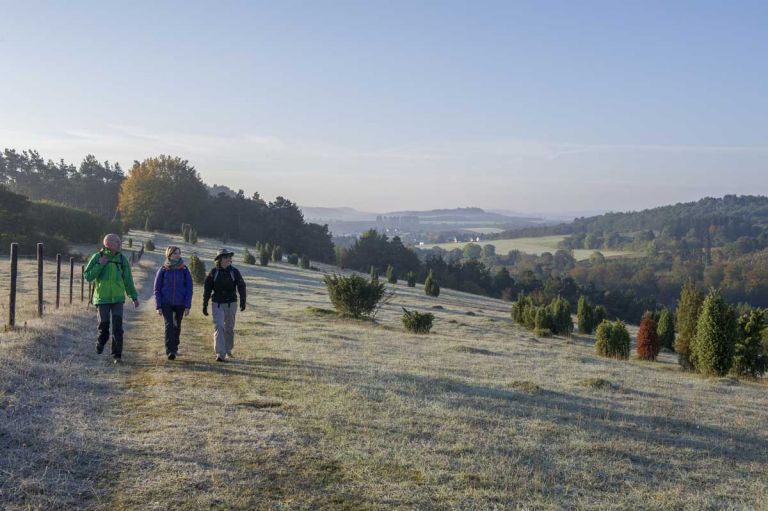Limestone Grassland
It couldn't be more species-rich: up to 40 or more different plant species and numerous animal species adapted to them can be found per square meter of limestone grassland.
Limestone grasslands are among the most species-rich grassland communities in the country. Up to 40 or more different plant species and numerous adapted animal species can be found per square meter. From early spring to the start of winter, violet pasqueflowers, yellow sun roses, blue gentian, colorful orchids and bright gold thistles delight us with their splendor of color. Common companions are juniper bushes, which are despised by grazing animals because of their prickliness and have spread as pasture weeds.
Open heathland landscapes
The lean grasslands are mainly found in the Middle Devonian limestone hollows, several of which run through the Vulkaneifel (Dollendorfer, Hillesheimer, Gerolsteiner and Salmwald limestone hollows). The open heath landscapes of the limestone hollows were created here through forest clearance and centuries of agricultural pasture use. Often in flat hilltops and south-facing slopes, they have summer dryness and a warm microclimate. Numerous relics of this originally widespread landscape type have been preserved in the Gerolstein/Pelm, Üxheim/Niederehe, Wiesbaum-Mirbach and Gönnersdorf/Lissendorf areas. They are maintained today by continuing traditional sheep grazing.











